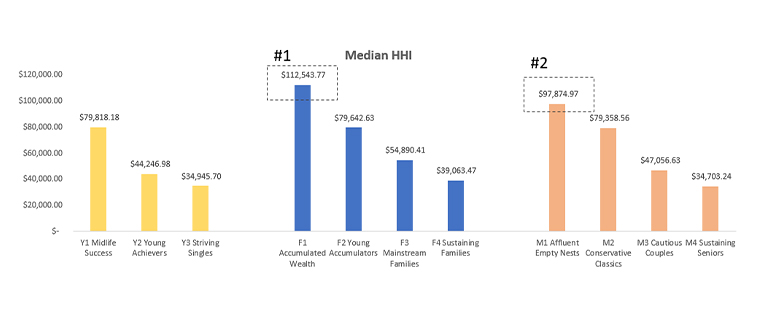Holistic view of audience is essential as advertisers consider buying power
Innovative Advertising Solutions Blog | 12 November 2019
Income is a common variable for discussion when advertising clients are deciding to whom they want to market. Depending on the product or service, a higher-than-average income may be required. Therefore, segmentation by income remains an often-used point when targeting consumers to ensure they are likely to have the capacity to buy certain goods or services.
It can be important to include a look at consumers’ net worth (assets minus debts) when assessing their ability to purchase. According to Nielsen Scarborough, the median annual household income of adults in the United States is US$60,721 while the median net worth is US$114,089. Looking at household income and net worth provides some different insights into audience buying power.

Everyone wants to target younger Millennials, who are often coming into their careers with school loan debt and haven’t yet built the assets for buying power. Sure, some have money and the ability to purchase large-ticket items. But don’t forget to look at the whole picture.
Some marketers are not even considering marketing to the mature population anymore. That can be a mistake. Mature segments have some of the greatest net worth, which can be translated into purchasing power. Mature audiences are often helping to fund their children’s purchases. That likely makes them part of the decision-making process.
Using Claritas PRIZM life stages, the median annual household income shows the affluent segments of the younger years, families, and the mature years, which stand out for higher earning income levels.

Advertisers may want to remember to consider this mature population, as it has the greatest net worth. Mature segments make up 36% of the population and account for more than three-fourths (76%) of retirees, but they also have more assets that equate to greater net worth and buying power.
This is just a simple example of the value of how looking at a more holistic view of the marketplace — looking at more than one variable to understand the buying power of the population — can be important to understanding the audience.































